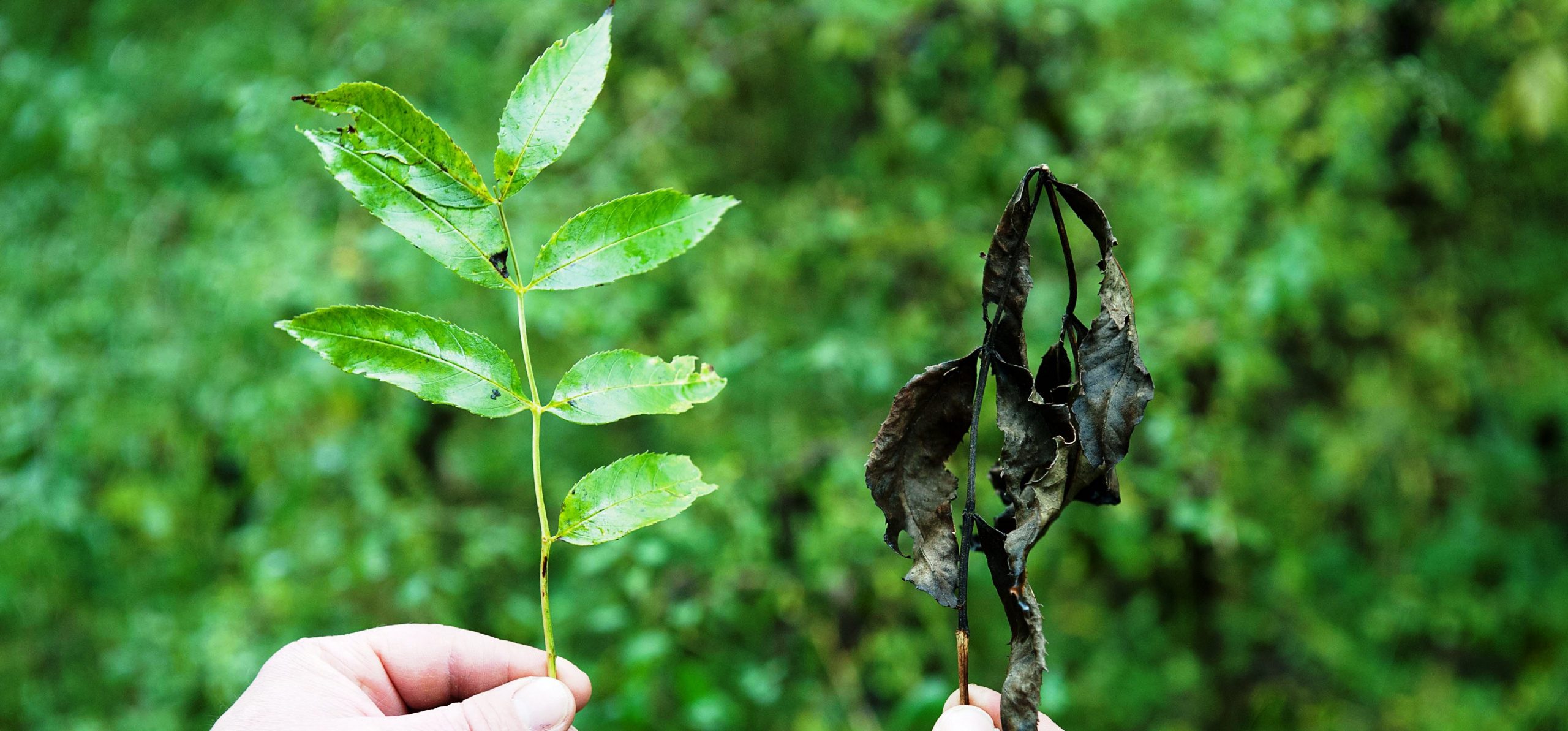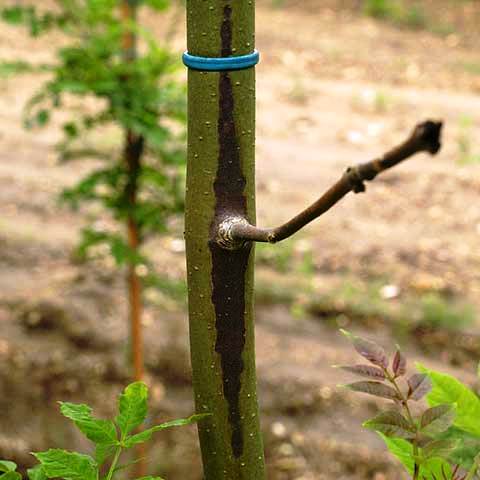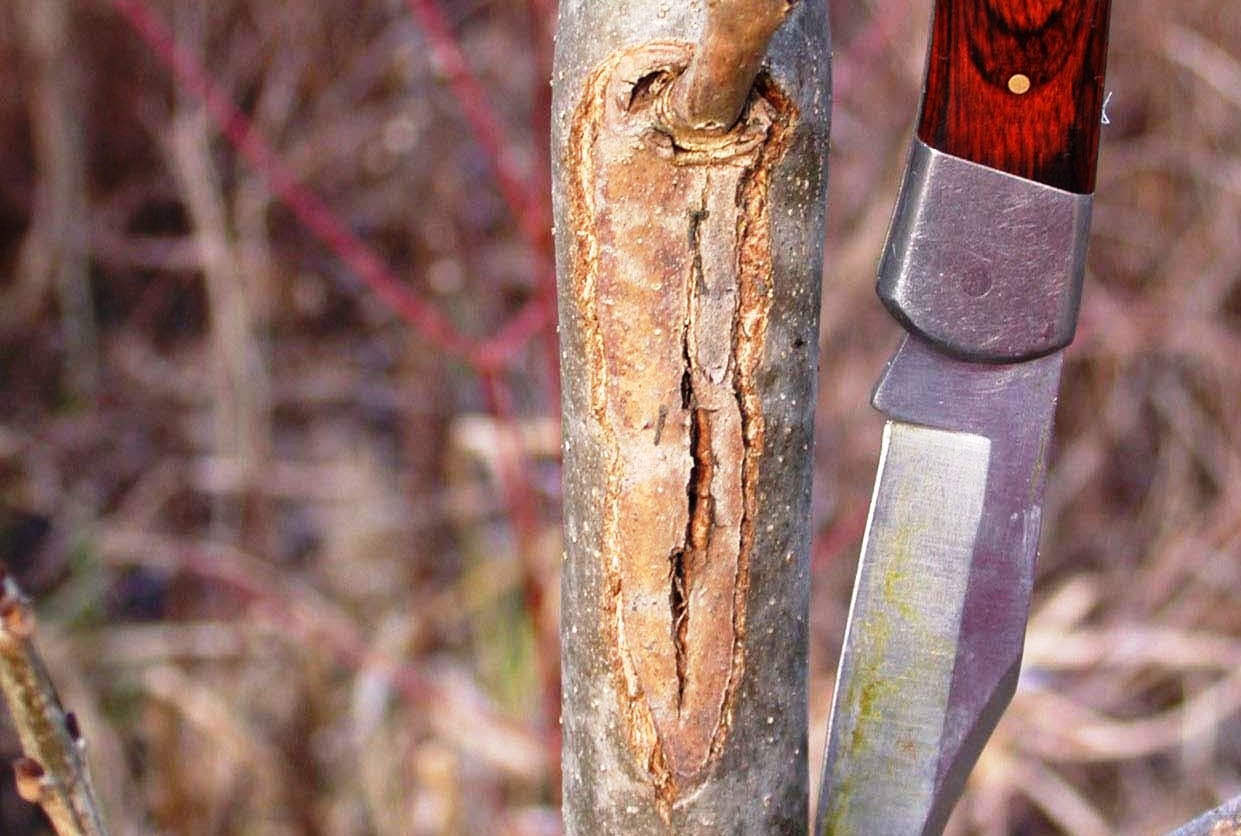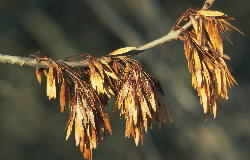Present in United Kingdom
Reportable – see ’Report a sighting’ below
Scientific name of causal agent – Hymenoscyphus fraxineus

Ash dieback is a highly destructive disease of ash trees (Fraxinus species), especially the United Kingdom’s native ash species, common ash (Fraxinus excelsior). It is caused by a fungus named Hymenoscyphus fraxineus (H. fraxineus), which is of eastern Asian origin.
The disease is also known as ‘Chalara’, ash dieback, and Chalara dieback of ash. Calling it ‘Chalara’ ash dieback helps to distinguish it from dieback on ash trees caused by other agents.
The asexual phase of the fungus’s life cycle was formerly known as Chalara fraxinea, hence the name of the disease, and the sexual phase was called Hymenoscyphus pseudoalbidus. Some older scientific, technical and policy documents which are still consulted use these earlier names.
Chalara ash dieback is present in most parts of the United Kingdom. Its effects are most visible in regions where the fungus has been present for the longest time, and where local conditions are most suitable for the fungus.
The progression of numbers and appearance of new grid squares on the map over time are not an indication of the rate of spread of the disease: they only indicate when the first infected sites in each grid square were found, not when the fungus first arrived at the site, which in many cases cannot be known.
It is widely present in continental Europe and Ireland.
Chalara ash dieback has the potential to cause significant damage to the UK’s ash population, with implications for woodland biodiversity and ecology, and for the hardwood industries.
Experience in continental Europe, which is now being seen replicated in the UK, indicates that it can kill young and coppiced ash trees quite quickly. However, older trees can resist it for some time until prolonged exposure, or another pest or pathogen, such as Armillaria (honey fungus), attacking them in their weakened state eventually causes them to succumb.
Ash is one of our most useful and versatile native tree species, providing valuable habitat for a wide range of dependent species. It can grow in a variety of soils and climatic conditions. The ‘airy’ nature of its foliage allows light to penetrate to the woodland floor, encouraging ground plants and fauna. A number of insects, other invertebrates, lichens and mosses depend wholly on ash for habitat.
A number of growers across the UK produce ash for the timber market. Ash timber is strong, durable, flexible and attractive, with a wide range of practical and decorative uses such as tool handles, flooring, furniture, joinery and sports goods, such as rowing oars and hurley sticks. These industries might be forced to consider alternative materials if the disease causes a shortage of suitable ash timber.
Chalara ash dieback is especially destructive of the UK’s native common or European ash (Fraxinus excelsior), including its ‘Pendula’ ornamental variety.
Narrow-leaved ash (F. angustifolia), a mainland European species also widely planted in the UK, is also susceptible. Another mainland European species, manna ash (F. ornus), has only been found with infected foliage, so it might prove to be tolerant of the fungus. There are more than 60 species of ash worldwide, and scientists believe that all of them are susceptible to the disease, with varying degrees of tolerance. See ‘Our research’ below for details of our project to assess the tolerance of more than 30 species.
It occurs on Asian species, such as Chinese ash (F. chinensis) and Manchurian ash (F. mandshurica). However, these species appear able to tolerate infection, showing only mild symptoms on their foliage, having co-evolved with the fungus over thousands of years.
H. fraxineus infection has been reported in the UK on some non-ash species which were growing close to infected ash trees. Among them were mock privet and narrow-leaved mock privet ((Phillyrea species) and white fringetree (Chionanthus virginicus), which are ornamental trees and shrubs native to the Mediterranean region and North America. These species belong to the same botanical family, Oleaceae, as ash. The findings are unlikely to have a significant impact in the UK because these species are ornamental and are not widespread.
Among the first symptoms that an ash tree might be infected with H. fraxineus is blackening and wilting of leaves and shoots (top picture) in mid- to late summer (July to September). These months are the best time of year to survey ash trees for Chalara symptoms in the foliage. This is because once autumn begins in late September or October, the normal seasonal change in the colour of the leaves can be mistaken for symptoms of the disease.

Most infected leaves are shed prematurely by the tree, but in some cases the infection progresses from the leaves and into the twigs, branches and eventually the trunk, causing dark lesions, or cankers, to form in the bark. These often have a characteristic elongated-diamond shape (pictured above) centred on the joints between branches, or where branches join the trunk. The lesions typically, but not always, spread upwards and downwards from the joint as the infection spreads in both directions. They can eventually girdle the whole trunk, cutting off the tree’s supply of fluid and nutrients from the roots.
If lesions are not large enough to entirely girdle the affected stem, they can dry out and crack open over time as the tree grows around the damage (below). They should be visible at any time of the year.

Picture: Thomas Kirisits
Some other aspects of ash biology can be mistaken for symptoms of Chalara ash dieback, but are normal for healthy ash.

The following documents provide additional help to accurately identify Chalara ash dieback.
We and the country forestry authorities are keen to receive reports of Chalara ash dieback in parts of the country where it has not already been recorded. This is so that we can monitor changes in its distribution and advise local woodland managers.
If you think you have spotted the disease in a new area, please check the distribution map and symptoms section above before reporting it to us.
Please note that TreeAlert and TreeCheck both require photographs to be uploaded. These should be clear, well-lit, close-up pictures of symptoms.
We regret that we cannot respond to each Tree Alert report individually. However, every one of them will be assessed, and for each report we will:
Local spread of up to tens of miles can be caused by the wind blowing spores of the fungus.
Spread over longer distances is most likely to be through the movement of diseased ash plants. There is currently a prohibition on importation and inland movements of ash seeds, plants or other planting material. See ‘Official action’ below.
Movement of logs or unsawn wood from infected trees might also be a pathway for the disease, although this is considered to be a low risk.
There is a limit to what can be done to prevent the spread of a wind-borne disease to plants as ubiquitous as ash trees. However, there is much that can be done to slow the spread and minimise its impacts.
Visitors to woods, forests, parks and public gardens can help to minimise the spread of Chalara ash dieback and other plant diseases. They can do this by brushing soil, mud, twigs, leaves and other plant debris off their footwear and wheels – including the wheels of cars, bicycles, mountain bikes, baby buggies and wheelchairs – before leaving the site. They should then wash these items at home before visiting another similar site.
Where possible, park motor vehicles on hard-standing, such as tarmac, concrete or gravel, rather than on grassed surfaces when visiting such sites.
Many mountain-biking trails are in forests, and we strongly encourage mountain-bikers, before they leave, to use the on-site wash-down facilities available at many trail centres. If you do arrive with a dirty bike, please use the wash-down facility before entering the forest so that you do not accidentally introduce Chalara or some other plant disease.
Gardeners, and managers of parks and other sites where ash trees might occur in small numbers, can help to slow the local spread of the disease by collecting up and burning (where permitted), burying or deep composting fallen ash leaves. This disrupts the fungus’s life cycle.
If composting the leaves, cover them with a 10 cm (4-inch) layer of soil or a 15-30 (6-12 inches) layer of other plant material, and leave the heap undisturbed for a year (other than covering it with more material). This is likely to prevent any spore dispersal.
There are additional biosecurity requirements for people who work in or manage woods and forests, such as foresters, forestry workers, tree surgeons and timber hauliers, as well as local authorities and other public agencies which manage trees. Our ash dieback manual has detailed guidance to the measures which are required or recommended.
The Tree Council has published detailed guidance in its Ash Dieback Action Plan Toolkit for councils and other public authorities which manage trees.
You are not legally required to take any particular action if you own infected ash trees, unless your country forestry or plant health authority serves you with a Statutory Plant Health Notice (SPHN) requiring action. This is unlikely.
With the exceptions of felling for public safety or timber production, we advise a general presumption against felling living ash trees, whether infected or not. This is because there is good evidence that a small proportion will be able to tolerate H. fraxineus infection. There is also the possibility that a proportion of ash trees can become diseased, but then recover to good health. These, too, would be valuable for our research, although it is still too early to know whether there are such trees in the British ash population.
However, by keeping as many ash trees standing as possible, we can identify individuals which appear to survive exposure to the fungus and which can be used for breeding tolerant ash trees for the future. See ‘Our research’ below for further information.
That said, public safety must be the priority, so keep an eye on the trees’ safety as the disease progresses, and prune or fell them if they or their branches threaten to cause injury or damage. In particular, watch for basal lesions (lesions, or cankers, forming near the bottom of the trunk), which can weaken the trunk and make the tree more prone to falling.
There is no known cure, although some fungicides might be effective in suppressing the disease, enabling individual ash trees of particular value to be saved. These might include trees of high amenity, heritage or cultural value. However, such treatments often have to be re-applied periodically, perhaps every year, and can therefore be expensive.
Meanwhile, our Chalara manual has detailed advice and guidance for woodland managers to help them keep their woodlands in the best possible condition and minimise the impact of ash dieback. This includes help with minimising the risk and damage to ash timber crops.
In addition, in 2019 the Forestry Commission compiled updated advice for ash tree owners and managers in its leaflet, Managing ash dieback in England. This leaflet provides an introduction to the disease, summarises current advice, and signposts to more detailed guidance produced by Defra, the Forestry Commission and others. To request printed copies, contact tree_health@forestrycommission.gov.uk.
Although much of the advice provided in the Forestry Commission leaflet is equally applicable in other parts of the UK, the Scottish Government has recently published information specifically covering ash dieback regulations, information and advice for Scotland.
The Tree Council has also produced country-specific guidance about managing Chalara ash dieback:
Grants might be available from the country forestry authorities to help woodland owners affected by Chalara ash dieback.
Upon discovery of infected ash trees in the wider environment in October 2012, we and others undertook a Great Britain-wide survey of about a thousand sites to establish an understanding of the distribution of the disease. The sites were ones which had received saplings from nurseries where the disease had been found.
Subsequent official action has been aimed at preventing further introductions of the disease and minimising its spread and impact.
The UK introduced national measures against ash dieback in 2012 which required all imports of ash trees (Fraxinus species) to originate from pest-free areas for ash dieback This effectively meant that imports and movements of ash plants were prohibited.
On 14th December 2019, Plant Health Regulations were implemented which mean the current legal basis for national measures has not applied since 13th January 2020. The UK meets World Trade Organization (WTO) obligations and operates the EU Plant Health Regulation, and will continue to do so until the end of the Exit From the EU Transition Period on 31 December 2020.
Under certain circumstances, the UK also uses national measures to enhance or supplement the main biosecurity provisions in the EU Regulation. These national measures are only used to protect against pests or diseases that are not already established in the UK. Ash dieback no longer meets these criteria – it is well established and widely distributed, being present in every county.
As such, there is no technical case and no purpose to retaining national measures against ash dieback. There is much more benefit to be gained from lifting the restrictions, so that tolerant ash trees can be bred, moved and planted. The main risk to ash now is from entry of new strains of ash dieback which are present in Asian countries but not in Europe, as well as other pests of ash trees, such as the emerald ash borer.
Given the prevalence of ash dieback within the UK, the main biosecurity concern is to minimise the risk of introducing new strains of the disease through imports. We are maintaining measures to prevent this, with the importation of ash plants from third (non-EU) countries prohibited. This will reduce the main risk of entry of new strains of H. fraxineus present in Asian countries, as well as dangerous new pests such as the emerald ash borer.
Given the current situation with ash dieback in the UK, imported ash is not a sustainable planting choice, and we ask growers to ensure strong biosecurity practices are followed in their planting choices. A guidance note providing more information about these changes is available (PDF).
Imports of ash wood and wood products, including firewood, are regulated to protect against introductions of emerald ash borer beetle (Agrilus planipennis). These regulations are explained on the UK Government website.
The Hymenoscyphus fraxineus fungus has two phases to its life-cycle: sexual and asexual.
The asexual stage grows in affected trees, attacking the leaves and bark, and girdling twigs and branches.

The sexual, reproductive stage occurs as tiny, white, mushroom-like fruiting bodies on infected rachises, or stalks, of the previous year’s fallen leaves (above). These fruiting bodies burst open in summer to release thousands of infective spores which can be spread by the wind on to the leaves and bark of healthy trees in summer, triggering the asexual phase and infection of the trees.
Government scientists have set out their understanding of the disease. Their assessment concluded that:
The best hope for the long-term future of the UK’s ash trees lies in identifying the genetic factors which enable some ash trees to tolerate or resist infection, and using these to breed new generations of tolerant ash trees for the future. Our scientists are working on this in partnership with colleagues from a number of other respected scientific research institutions.
In June 2019 the UK Government launched a refreshed research strategy for identifying ways in which threats to our ash trees, including Chalara ash dieback and emerald ash borer, can be best mitigated or prevented. The strategy builds on the research already carried out, and lays out priority themes for future research to ensure the best possible management of the immediate impacts of ash dieback and an optimal response to any incursion of emerald ash borer.
Forest Research is identified in the strategy as the lead, or a key partner, in several strands of the proposed research programme.
We are also part of the Nornex Consortium of research institutions, which was awarded £2.4 million research funding from Defra and others to gather an in-depth understanding of the disease, and to provide genetic clues about the natural tolerance or resistance of some ash trees to it.
As part of this work, we are leading a mass screening trial to identify inherent tolerance or resistance in ash trees. In 2013 we planted out almost 155,000 ash seedlings from a variety of provenances in Britain, Ireland and continental Europe. They were planted on sites kindly made available by landowners in Norfolk, Suffolk, Essex and Kent, where the disease is most advanced, and therefore where the fungal spores were abundant.
Five years later we identified 575 young trees which remained free of symptoms and therefore apparently tolerant, and others which were infected but still alive. We have made 1355 grafts from the 575 symptom-free plants, and these will be planted out in what we hope will become a seed orchard (source of seeds for planting) and an archive for researchers.
The Living Ash Project is a partnership of Forest Research and the Future Trees Trust, with two main work streams.
In the first, we have made a further 420 grafts from apparently tolerant trees found in woodlands and hedgerows across the UK. These will be planted out with those from the mass screening trial. By planting the trees all together on one site, we ensure that, when they reach pollination age, apparently tolerant trees will pollinate other apparently tolerant trees, and most of the offspring of two tolerant parents should also be tolerant. All going well, we hope the orchard will start producing tolerant seed for planting in the mid- to late 2030s.
The second work stream of the Living Ash Project is investigating the variation and ‘heritability’ of tolerance. Heritability refers to the degree to which tolerance is passed from one generation to the next.
Seed were collected from 50 trees in the Future Trees Trust’s existing seed orchard, raised, and planted out in experimental trials. Every tree’s level or absence of infection is being monitored, and from these data we hope to be able to estimate components of genetic variance and, from there, derive heritability estimates.
If any of these seedlings prove to be tolerant, it’s likely that the mother trees from which the seed were collected are also tolerant. The mother trees could then be used as sources of tolerant seed for future planting. Data from continental Europe suggest there is relatively high heritability there. If this also proves to be true of the British ash population, it should mean that breeding from tolerant trees will lead to an increase in the number of tolerant trees in the landscape sooner than the 2030s.
Another objective of this project is to develop tissue culture techniques which will enable rapid production of large numbers of tolerant ash plants for planting.
The ideal scenario, which the previous three projects are working towards, is that we will be able to breed from tolerant native ash trees (F. excelsior). However, if that proves too difficult it seems wise to develop a second line of defence.
So our project to test tolerance of Chalara is investigating levels of Chalara tolerance in other ash species so that, if necessary, they can be crossed with common ash to induce tolerance. The tolerant hybrids could then be back-crossed to common ash.
It is known that at least two Asian ash species, Manchurian ash (F. mandshurica) and Chinese ash (F. chinensis), can co-exist with the H. fraxineus fungus. There are more than 60 species of ash worldwide, and we found nearly 30 different species growing in British arboreta. Their managers responded positively to our request for scions (cuttings) for grafting on to common ash rootstock. These grafts have been planted out, and we will be monitoring them for tolerance over the coming years.
The Hymenoscyphus fraxineus fungus appears to have originated in eastern Asia where, because it has co-evolved over thousands of years with Asian ash species, it does little damage to them.
Ash trees of European species, especially F. excelsior, were first reported dying in large numbers in Poland in 1992 from what is now known to have been Chalara ash dieback. The disease has been found widely across Europe since then.
However, it was 2006 before scientists described the fungus which was causing the disease, and then only the asexual phase. It was initially named Chalara fraxinea. Then in 2009, C. fraxinea was suggested to be the asexual stage of the fungus Hymenoscyphus albidus. H. albidus develops on fallen ash leaves, has been known in Europe since 1851, and is regarded as non-pathogenic (does not cause disease). However, in 2010, further research led to the sexual stage of the fungus being recognised as a different species new to science, and it was named Hymenoscyphus pseudoalbidus because of its close similarity to H. albidus.
In 2014 the International Botanical Congress determined that the correct name for both phases of the life cycle should be Hymenoscyphus fraxineus.
Chalara ash dieback was first confirmed in the UK in February 2012 in a consignment of infected ash plants sent from a nursery in The Netherlands to a nursery in Buckinghamshire, England. Later in 2012 it was found on ash trees at sites in the wider natural environment, including established woodland, which did not appear to have any association with plants recently supplied by nurseries.
Our scientists have since found evidence that it first entered Great Britain some time before 2006.
It is not known how or when it first entered Europe, but one possibility is that it was introduced on infected ash plants imported from Asia. We know that is one pathway by which it entered the UK, because besides the consignment to the Buckinghamshire nursery, we and the forestry and plant health authorities were able to link a number of outbreaks around the UK to nearby recent plantings of imported ash plants.
However, the discovery of infected, older trees with no apparent association with plants supplied by nurseries raised the possibility that it also entered by natural means. These could include spores being carried on the wind or on birds across the North Sea and English Channel, or on items such as footwear, clothing or vehicles coming into the UK from continental Europe.
According to the European Plant Protection Organization (EPPO), the disease is present in Austria, Belgium, the Czech Republic, Denmark, Estonia, Finland, France, Germany, Hungary, Italy, Latvia, Lithuania, The Netherlands, Norway, Poland, Slovenia, Sweden and Switzerland.
Forestry Commission Research Note, July 2017.